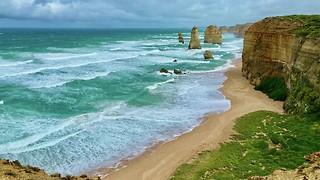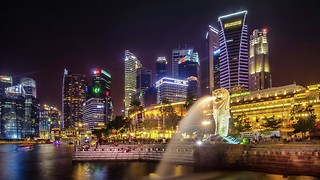Music: Sinfonia d’Amici, St John’s Church Waterloo
Aaron Watts is impressed by an ambitious performance
Sinfonia d’Amici
Mozart Horn Concerto – K. 495
Mahler Symphony No. 1 – ‘Titan’
Harry Ogg (conductor), James Pillai (horn).
St John’s Church Waterloo, London
To begin with a biographical note: the Sinfonia d’Amici is a young professional orchestra, founded and directed by current Cambridge undergraduate Harry Ogg (Clare) in 2009. Given Ogg’s recent activity on West Road – notably assisting Martin Yates in a highly interventionist reading of Shostakovich 7 – this concert, with its unsettling pairing of late Mozart and early Mahler, was accompanied by certain expectations.
Mozart’s K.495 concerto for horn and orchestra (1786) proved a jarring, though hugely capable, first manoeuvre. The piece operates as a genial face-off between soloist and band – the association of Mozart with the virtuoso, Joseph Leutgeb was nicely signposted by an edifying programme note – but it took a while for both parties to exert themselves. The first horn entrance in the Allegro moderato lacked even the slightest suspicion of demureness; the orchestra, of course, had already spun the theme into variation by this stage. Pitch-steadiness took hold by the Romanza andante and James Pillai’s tone – peaceable yet rich, in pleasing contrast to the ‘cleaner’ English variant fashionable today – came into its own. By the time of the galloping 6/8 Rondo – today’s cliché but an idiom relatively unknown from the Baroque until Rosetti’s innovations in the 1770s – the orchestra had begun to interrupt with real presence and bounce. I enjoyed this light concerto, though ‘light’ it certainly became with the gentle ushering of Mahlerian Naturlaut.
This ambitious performance of the ‘Titan’ symphony (1887-8) was impressive: only reluctantly full-throttled, yet appropriately deft and saccharine. The first movement’s woodwind birdsong neatly aligned with the undercurrents; the clarinets in particular punctured the orchestral texture in the somewhat unforgiving acoustic of St John’s Church Waterloo. Off-stage trumpets were scintillating. The second movement gave rise to a hearty Ländler, with some especially characterful playing from the cellos. Ogg negotiated tricky corners of the waltz trio with grace and restraint, only several times conceding to interventionist impulses: rubato, portamenti, etc. There was, mercifully, no attempt to beautify the opening double bass solo in the third movement: a haunting minor-key revision of Frère Jacques. Indeed, casting my own anti-programmatic prejudices aside, the movement evoked Schwind’s eerie 1850 woodcutting, ‘The Hunter’s Funeral Procession’, as the guidebooks encourage. Counterpoint melodies from the oboe and flute ensured a spiteful, grotesque reorientation away from sombre complacency. The quotations from Lieder eines fahrenden Gesellen were clearly stated. It was, in several respects, the most pleasing part of the evening’s concert. The final movement kowtowed to too much conductorial heartiness. Embouchures were tiring. The upper strings were not well-quilted. I would have preferred a long, planned, gradual accelerando to the end rather than sudden abandon. But by the time we arrived, forces had re-mustered to a present a coda of joyous release.
A note of wistfulness behind so much gaiety in the concerto, or a quietly daring exploration of parody and satire in both works, might have better reconciled Mozart to Mahler – odd, though, that the debt should be this way round. This was a thought-provoking, eloquent, and stylish evening.
 News / Students form new left-wing society in criticism of CULC3 September 2025
News / Students form new left-wing society in criticism of CULC3 September 2025 News / Tompkins Table 2025: Trinity widens gap on Christ’s19 August 2025
News / Tompkins Table 2025: Trinity widens gap on Christ’s19 August 2025 News / Cambridge’s tallest building restored to former glory1 September 2025
News / Cambridge’s tallest building restored to former glory1 September 2025 News / Student house could become homeless shelter2 September 2025
News / Student house could become homeless shelter2 September 2025 Comment / The reality of the Tompkins Table rankings3 September 2025
Comment / The reality of the Tompkins Table rankings3 September 2025








